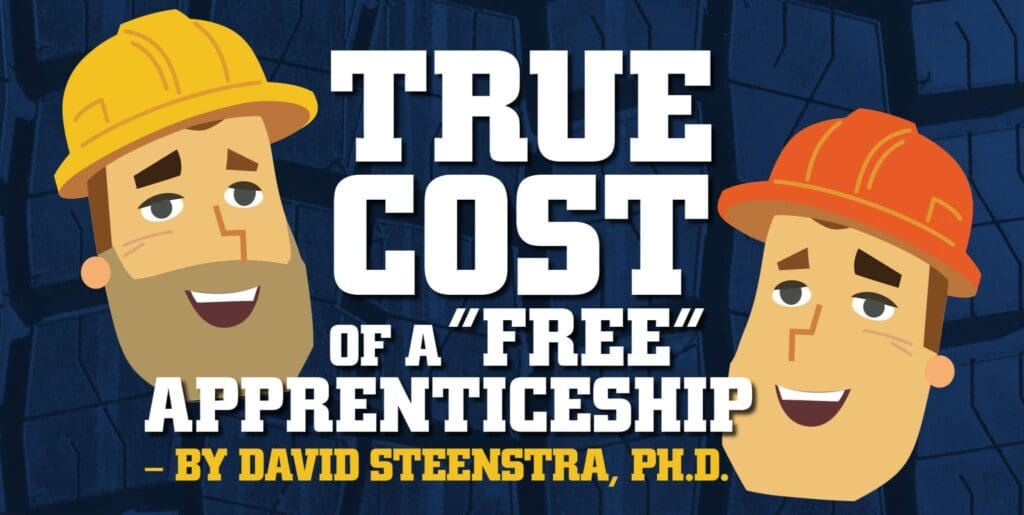As a professor and former Dean of Business at Ferris State University, I’m often questioned about the cost of a post-secondary education and how that compares with the earn-as-you-learn union apprenticeship opportunities. Many would argue that apprenticeships are free education, but sometimes “free” isn’t really free. Let me explain how a union apprenticeship works.
The primary function of a labor union is to represent its members in negotiations (aka, collective bargaining agreement—CBA) with employers concerning wages, benefits, work hours and working conditions. An apprentice under a CBA doesn’t work for the union but is a member and pays dues: he or she is an employee of the company that issues the paycheck.
Let’s talk about the “free” apprenticeship program. We’ll use an apprentice heavy equipment operator as an example. We’ll say the apprentice wage is 80 percent of journeyman scale for the first 2,000 hours, which is very likely. The apprenticeship hours requirement is generally around 4,000, and wages fluctuate from 60-90 percent of journeyman scale, with most starting around 60 percent. Let’s also assume that the journeyman scale is $20 an hour (excluding fringe benefits, as apprentices may not qualify for them). A typical rule of thumb estimates union dues equivalent to two hours of pay per month.

Here we have our apprentice beginning his on-the-job “free” training and earning 80 percent of the journeyman’s wage. That’s $16 an hour. We’ll assume the apprenticeship program is two years or 4,000 hours—typical of an apprenticeship. If we take the $4 difference per hour between the apprentice’s wages and the journeyman’s and multiply it by the base man-hours per year for two years ($4 x 2,080 x 2), the total is $16,640. Figure another $960 for local union dues, and the “free” apprenticeship actually costs $17,600.
Free-Internship-HeavyEquipmentCollegesofAmericaHow is that possible, considering the apprentice is earning $33,280 per year ($16/hour x 2,080 hours) or $66,560 for the two-year apprenticeship? It’s opportunity cost. Had the employee been a journeyman, he or she would have earned $41,600 per year or $83,200 for the two years. The difference between the two scenarios is the opportunity cost of the “free” program.
Now, if the individual instead opts for training at a school such as HEC, he or she can finish the program in three weeks and be considered an entry-level journeyman, making 100 percent of scale wages. Additionally, that journeyman will be certified, and that’s what employers are looking for.
It’s true that after three weeks, an entry-level heavy equipment operator won’t be the world’s best. That takes time and practice. HEC simply condenses and accelerates the learning curve, establishes the necessary safety practices that employers require and proctors nationally recognized certification tests.
HEC provides the entry-level knowledge, skills and abilities for its operators to begin their practice.

